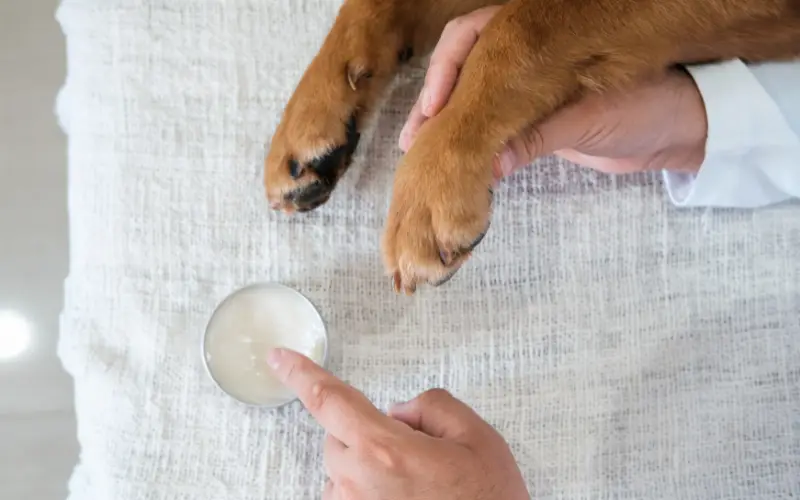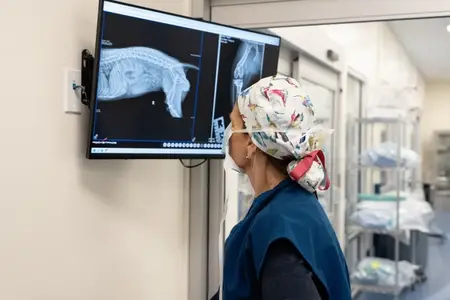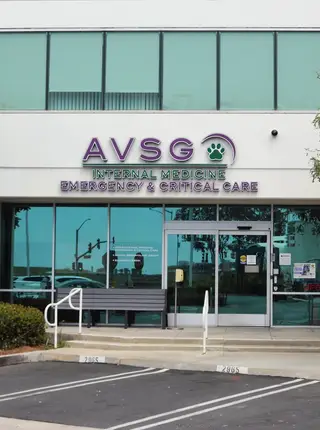Summer is a great time to get outside with your furry friend, but rising temperatures can pose hidden dangers—especially for your pet’s sensitive paws. Hot pavement, metal surfaces, and even sand at the beach can cause painful burns—often without pet owners realizing it until it’s too late! Here's how you can protect your pet from paw burns and what to do if your pet does get burned.
Why Burned Paws Happen
Unlike humans, dogs and cats don’t wear shoes (there are some who wear cute booties!) and their paw pads, while tough, aren't immune to extreme temperatures. Pavement, asphalt, and even artificial turf can become dangerously hot, especially on sunny days. In fact, asphalt can reach over 140°F when the air temperature is just 85°F. That’s hot enough to cause burns within seconds.
Pets are particularly vulnerable during walks or playtime in the middle of the day when surfaces absorb and radiate the most heat.

How to Prevent Burned Paws
- Test the Ground First: Before heading out, place the back of your hand on the pavement. If it’s too hot to keep your hand there for 5-7 seconds, it’s too hot for your pet’s paws.
- Walk During Cooler Hours: The California sun at noon is unforgiving! Opt for early morning or late evening walks when surfaces are cooler.
- Use Pet Booties or Paw Wax: Booties provide a barrier between your pet’s feet and hot surfaces. If your pet isn’t a fan of shoes, paw balms or waxes can offer a layer of protection against heat.
- Keep to Grass or Dirt Trails: Shaded paths or grassy areas are ideal for walks on hot days. Try to stick to natural surfaces during the summer. Need suggestions? Popular spots in Orange County include The Great Park in Irvine, Central Bark Dog Park at the Irvine Spectrum, and Heisler Park in Laguna Beach.
- Regular Paw Checks: Make it a habit to inspect your pet’s paws after walks. Look for signs of redness, blisters, or cracks.

Signs of Paw Pad Burns
Burns can range from mild to severe. Be on the lookout for:
- Limping or reluctance to walk
- Licking or chewing their feet
- Darkened, red, or raw-looking pads
- Blisters or peeling skin
- Whining or sensitivity when paws are touched
If you notice any of these signs, it’s important to act quickly.
What to Do If Your Pet’s Paws Are Burned
- Get to a Cool, Safe Area: Move your pet off the hot surface immediately.
- Cool the Paws: Rinse the paws gently with cool (not cold) water. Avoid using ice, which can further damage tissue. A clean, damp towel can also help reduce heat and soothe the area.
- Deter Licking: Your pet might try to lick the burns, which can cause infection. Use a cone or bootie if necessary to prevent further irritation.
- Apply a Pet-Safe Antiseptic: Use an over-the-counter antiseptic recommended for pets, such as a pet-specific wound spray. Never use human ointments like Neosporin unless directed by your vet.
- See Your Veterinarian: Even minor burns should be evaluated by a vet. Your pet may need pain relief, antibiotics, or bandaging to prevent infection and promote healing.

Long-Term Paw Care
Maintaining your pet’s paw health year-round can help reduce the risk of injury. Trim nails regularly, keep paw fur tidy (no grinch feet!), and moisturize pads with pet-safe balms to prevent cracks. Be extra cautious after grooming, as freshly trimmed fur between the toes offers less protection.
When in Doubt, Remember P.A.W:
- Protect Their Paws – use booties or pet-safe balms.
- Always check the ground – if it’s too hot for you, it’s too hot for them.
- Walk Smart – choose cooler times of the day and keep to shaded, grassy areas.
Final Thoughts
Burned paws are painful and can take days or even weeks to heal. But with a few preventive measures and quick action if burns do occur, you can keep your pet safe and comfortable all summer long. When in doubt, trust your instincts—if the ground feels too hot for you, it’s definitely too hot for them.
Stay safe, stay cool, and enjoy the California sunshine responsibly with your pet!
If you have any questions or concerns, call us at 949-653-9300. If you’re in Southern California, our Emergency and Critical Care facility is open 24-hours a day, 7 days a week. No appointment needed.
The information contained in the article is for informational purposes only and is not intended to take the place of the advice of a veterinarian.




